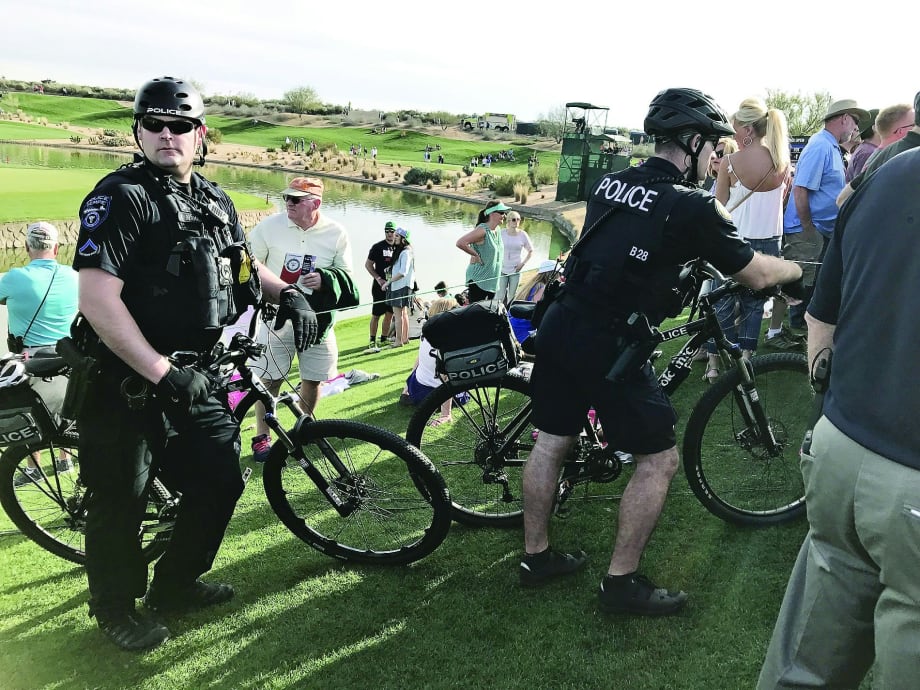The static use of bicycles is usually seen at the end of roadways or at large intersections. They can be placed across roadways, placing the bikes front wheel over rear wheel, in solid formation that allows for a skirmish line to be created in a mobile field force situation. As long as the integrity of the formation is maintained, a unit can conduct arrests and maneuvers behind the line of bicycles effectively and safely. Mobile field force units that deploy accessory weapons or those that are on foot can move through the skirmish line to effect arrests. The static line of bicycles can be much more effective than patrol officers standing shield to shield. A group of bicycles can be placed front tire to rear tire, the officers can move back several feet, and the integrity of the line is still maintained.
A moving group of bicycle officers can be used in the same manner as most mobile field force formations. They can be positioned in a wedge formation, forcing groups to move laterally or pushing the group back. A clear command of "move back" must be used in time with moving the bike fence back toward a group or subject.
You can also use bicycles in columns to prevent moving subjects form gaining access to a particular area. This is the easiest and most effective way to move a group of bicycles. Once in a column, officers can turn and form a barrier between the intended groups. Officers can then be placed away from the crowd to quickly respond only when needed. This provides a swift movement of officers to one location with little disruption of a crowd.
These columns can also be used to protect dignitaries and move them through a crowd. The columns will ride on each side of the individual with a point officer directing the group by clearly communicating turns and parting the crowd.
In 2016, thousands of people attended the Republican National Convention. Some were supporters while others were attending in protest. In anticipation of the large crowds, the organizing bodies elected to use bicycle officers instead of patrol resources for security. This was because bicycle officers are more mobile and can react more quickly to the movements of the protests. They are also less assuming and have a less threatening effect on most crowds. A concern in any moving protest is how to maintain professionalism and effectiveness, without sacrificing the safety of the group. As a moving unit of 20 to 30 bicycle officers per group, 300 bike officers were able to surround entrances and seal off corridors to raucous protestors, which were constantly moving back and forth. They did so by positioning their bicycles in a proper bike fence with overlapping tires.












